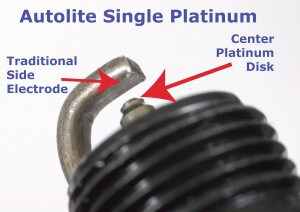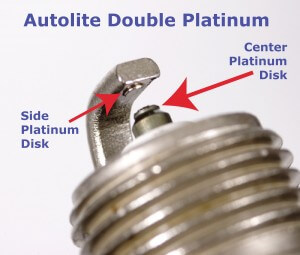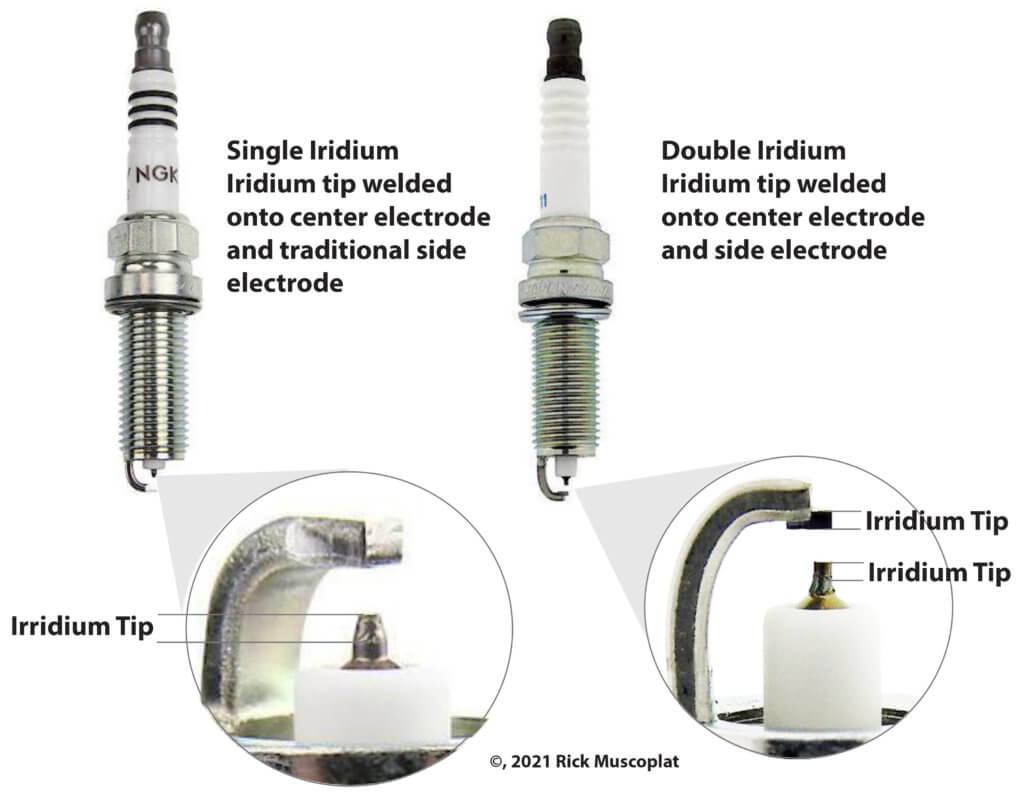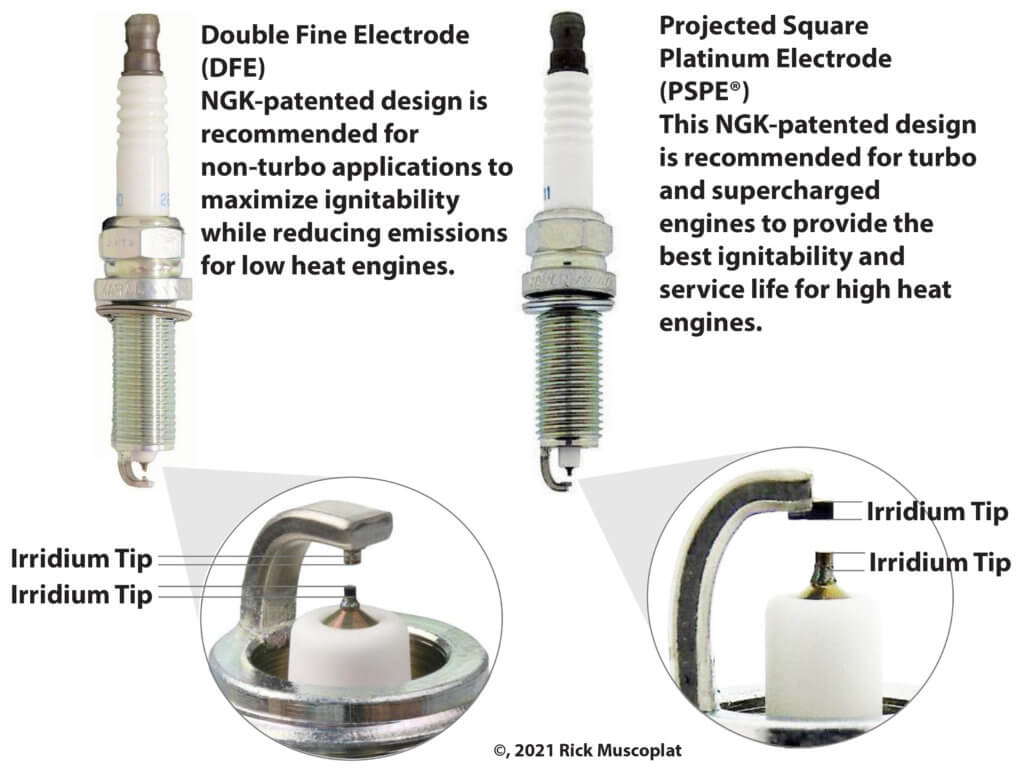Spark plug replacement
Spark plug replacement
When it comes time for spark plug replacement, you install the type of plug recommended by the carmaker, or you can upgrade to a better plug. Any auto parts seller can tell you which type of spark plug was installed at the factory, like: platinum, double platinum, iridium.
When to do a spark plug replacement
Many online experts maintain that spark plugs last 100K mile or more. That’s not universally true. When platinum spark plugs came out, some carmakers raised the spark plug change intervals to as long as every 100,000 miles for some engines. But that was for DIS type ignition systems. Late model engines uses turbochargers, lean-burn engines and coil-on-plug ignition systems. The combustion in those engines runs hotter and wears out spark plugs faster. Consult your owner’s maintenance guide for the recommended spark plug replacement interval. In many cases, the interval can be as low as 40K or 60K miles.
The spark plug change interval depends on engine design. Many late model turbocharged engines require spark plug replacement as often as 40,000 miles, and that with iridium spark plugs!
Types of spark plug replacements
“Copper” spark plugs
Copper spark plugs have a nickel-fused center electrode and side electrode on an internal copper core. Copper offers the lowest electrical resistance so they’re preferred on some high-performance engines. They’re cheap, but they have a short life because the center electrode rounds off which increases the gap size, causing higher firing voltage and sometimes resulting in misfires.
Platinum spark plug
In the mid-1980s carmakers switched to using precious metals  on the tips of the spark plug electrodes. The whole point of using precious metals was to reduce the erosion (wear) caused by higher firing voltages. Platinum has a higher melting point than copper, so the center electrode maintained its sharp edge longer, which allowed spark plugs to remain in service for as long as 100,000 miles.
on the tips of the spark plug electrodes. The whole point of using precious metals was to reduce the erosion (wear) caused by higher firing voltages. Platinum has a higher melting point than copper, so the center electrode maintained its sharp edge longer, which allowed spark plugs to remain in service for as long as 100,000 miles.
Double platinum spark plugs
Double platinum spark plugs contain a platinum-tipped center and side electrode. They were designed to provide longer life when used in waste spark distributor-less ignition systems where the spark in the f iring cylinder jumps from the center electrode to the side electrode and in the partner cylinder from the side electrode to the center electrode.
iring cylinder jumps from the center electrode to the side electrode and in the partner cylinder from the side electrode to the center electrode.
Iridium spark plugs and double iridium
In the mid-1990s, carmakers switched to a harder precious metal: iridium. Iridium has a much higher melting point (700 degrees higher than platinum) is 6 times harder than and 8 times stronger than platinum, and conducts electricity better than any of the other precious metals. Therefore, it lasts the longest. However, it has a price to match. Depending on the brand, iridium plugs run from $8-15 per plug.
Ruthenium Spark plugs
Ruthenium spark plugs from NGK are the latest design. NGK claims their new RUTHENIUM HX™ spark plugs provide a more complete fuel burn than other precious metal spark plugs. They also claim quicker throttle response, smoother idle, and better cold starts.
Ruthenium has a high melting point 4233°F, slightly lower than Iridium. But when alloyed with other metals, it becomes much more resistant to corrosion and oxidation than current iridium and platinum alloys.

NGK Ruthenium spark plug tip designs
Spark plug upgrades
You can always upgrade to a better spark plug, but you should never downgrade.
Make sure you use a torque wrench to tighten spark plugs
Plug manufacturers used to recommend applying a small dab of anti-seize compound on the threads. Not anymore. Spark plugs these days have an anti-corrosive treatment that makes anti-seize obsolete. Unless specifically recommended by the spark plug manufacturer, do NOT apply anti-seize to the spark plug threads. If you do, you MUST reduce the torque setting on your wrench by almost 20%.
Over-or-under-torquing spark plugs in an aluminum engine can cause substantial damage
If you under-torque, the repeated compression cycles can loosen the plug and blow it right out of the hole—taking the threads with it. That can easily cost you $500-$1,000 to repair. Some torque specs are as low as 10-ft/lbs. So it’s really easy to over-torque them. Check your service manual or the spark plug manufacturer’s specs for the right torque.
If you over-torque, you can damage the threads in the aluminum cylinder head, and you can distort the metal spark plug shell and cause a leak between the shell and the porcelain.
Check the spark plug gap before doing a spark plug replacement
Some spark plugs come pre-gapped and the instructions on the box warn you not to re-gap. Follow those warnings. If there are not warnings and the gap on the plug isn’t right, adjust the gap using proper spark plug gapping tools.
Use a proper spark plug gapper tool
See this post on how to choose a gapper tool
© 2012 Rick Muscoplat
Posted on by Rick Muscoplat